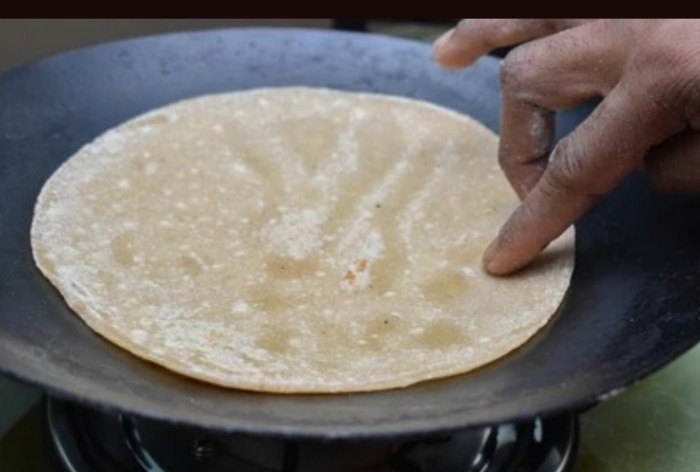In Indian households, chapatis are often cooked directly on open flame. However, there can be a discussion on which is healthier, cooking rotis on direct flame or gas stove?

Roti or Chapati is a significant Indian bread eaten at literally every meal. Roti is made from wheat flour, water, and salt and is cooked on a hot griddle or tawa. Indian households usually prefer to roast rotis on direct flame using a thong. However, as per studies, this popular cooking tradition was quoted being unhealthy and leading to the risk of cancer. If you have never cooked directly on a gas stove’s flame, you might wonder if that’s possible. Well to know more about this, we have stated whether this fact is true and which cooking method one should opt for.
Is Roasting Chapatis on Direct Flame Dangerous?
Well, there is no significant scientific evidence to claim that cooking roti on a direct flame can cause cancer. Studies have shown that the levels of carcinogenic compounds produced during the cooking of roti are low and are not likely to pose a significant health risk. Based on the study, E-Times spoke to Dr Shyam Aggarwal, who is a senior consultant at Sir Ganga Ram Hospital about the correlation between high-temperature cooking and cancer.
He said, “We cannot link direct flame cooking with cancer. Carcinogens like heterocyclic amines (HCAs) and polycyclic aromatic hydrocarbons (PAHs) are responsible for altering the DNA of the human body. It is not easy to say if the DNA damage is resulting in cancer as the human body has a natural mechanism to repair itself and emit such cells. Cancer Genesis results from gene alterations in the cells. So, the chemicals that generate through high-temperature cooking, have the potential to damage the DNA. Also, if we correlate high-temperature cooking with cancer, then the person should have been consuming such foods for a long duration. Cancer doesn’t happen on a few intakes of carcinogens. If a person consumes such foods (high-temperature) regularly, only then the carcinogens enter the body. So, I would say that there is no epidemiological evidence that reflects upon this correlation between high-temperature cooking and cancer. In principle, if there is anything that’s causing DNA alteration, one should avoid that thing.”
Which is Better, Cooking Roti on Tawa or Direct Flame?
Also, Celebrity Nutritionist Shweta Shah shared her intake with E-Times on which method of cooking chapati is better. According to her ”Previously Roti and Chapati were cooked on a tawa by pressing with a cloth. This method was a little time consuming, but it ensured that chapati is cooked at all the ends. Fast forwarding to recent times, Chapatis are cooked directly on the flames. Now, even though this method saves time, but there are few cautions to this method. Sometimes, Roti is not evenly cooked, some parts may burn turning black. Other thing is, as it is directly cooked on the flame, it may attract all the particles stuck on the gas stove. The harmful gases may enter the roti and make it harmful to health.” She concluded by saying it’s better to cook rotis on old tawa rather directly on flame ”So, why risk it? switch to your good old tawa and take your sweet time making Chapatis.”
Here’s Why You Should Cook Roti on Tawa:
- A tawa is a flat and round iron or heat-conductive material griddle. When heated, it properly distributes heat throughout the surface, ensuring that the roti is evenly cooked.
- Cooking on tawa retains nutrients, such as fibre, protein and carbhoydrates. Since the roti is not cooked at a high temperature, these nutrients are not altered.
- Cooking roti on a tawa uses little oil or ghee, making it a low-fat cooking technique. Because the tawa holds heat efficiently, the roti cooks quickly without sticking or burning.

Don’t Miss Out on the Latest Updates.
Subscribe to Our Newsletter Today!

